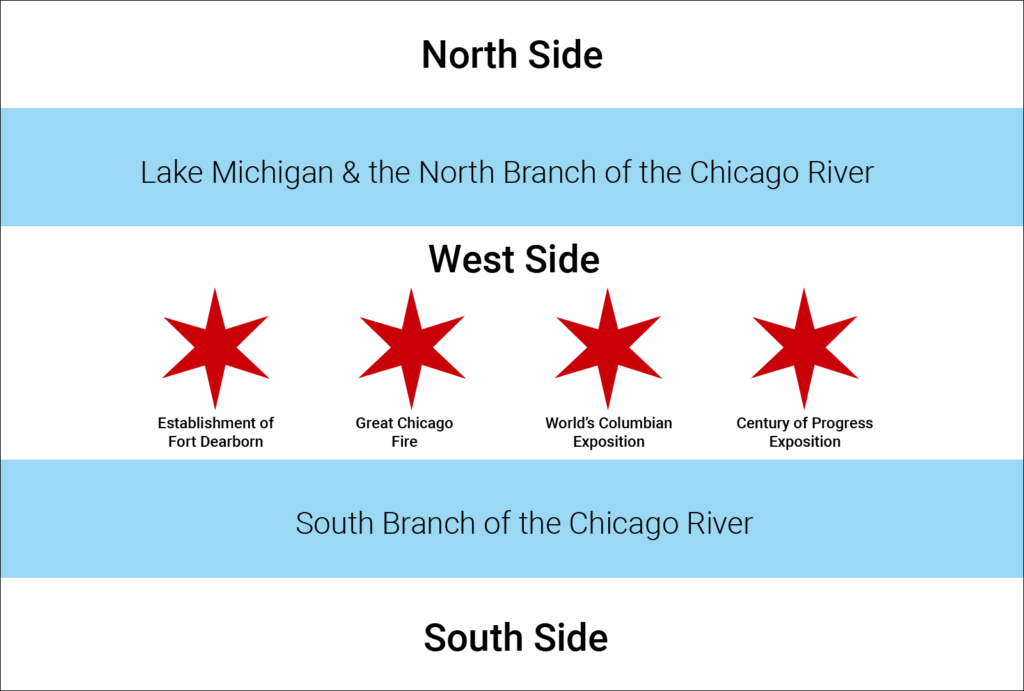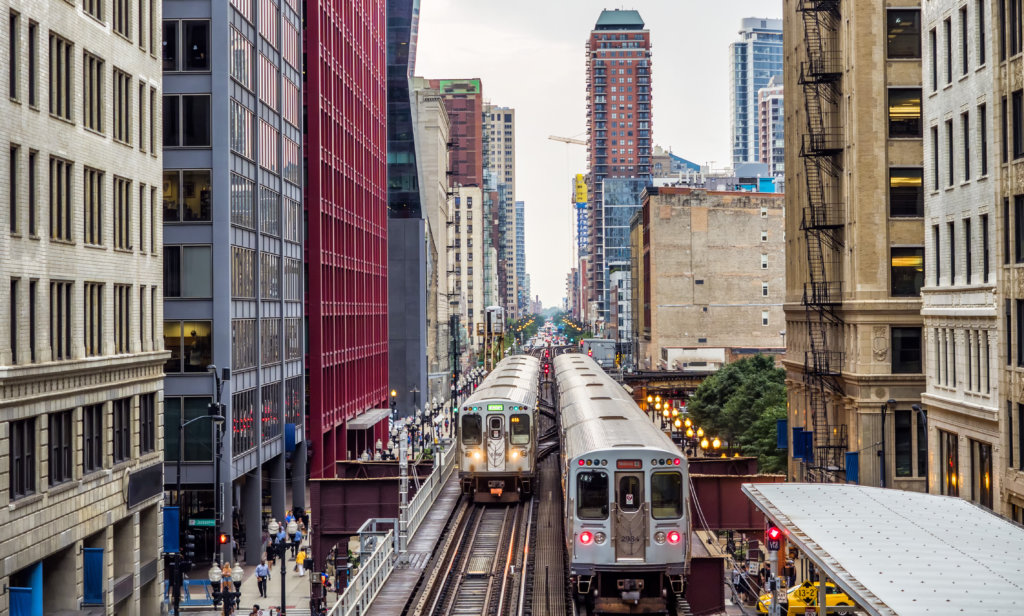According to the North American Vexillological Association, the world’s foremost organization dedicated to the study of the cultural, historical, political, and social significance of flags, there are five principles that lead to superior designs of a flag:
- Keep it simple
- Use meaningful symbolism
- Use two or three basic colors
- No lettering or organizational seals
- Be distinctive or be related to other flags
Chicago’s flag meets all of these criteria. In fact, a 2004 survey of the nation’s best city flags, conducted by the Vexillological Association, placed Chicago’s flag second in competition against hundreds of other municipal flags from cities across North America. (Washington D.C.’s municipal flag, which resembles George Washington’s coat of arms, finished first.) Not bad for a flag that was approved by the Chicago City Council more than 100 years ago and made its first public appearance a few days later (April 1917) at a car dealership in the Motor Row neighborhood on the city’s South Side.

Chicago’s official municipal flag is wildly popular. It is imprinted on virtually every city souvenir imaginable, is widely flown and displayed at buildings and residences across the city, imprinted on foods (cupcakes!) and, according to local artists, is one of the most popular designs at city tattoo parlors.
Who designed the flag? In 1915, Mayor William Hale Thompson established a municipal flag commission to review flag designs that would be entered in a contest. Poet, lecturer and author Wallace Rice was selected by the committee to develop rules that would govern the competition. Ultimately, the commission selected a design that was submitted by Rice himself. His design featured three main components — white stripes, blue stripes and six-pointed red stars — all of which symbolized key dates and facts about Chicago’s history and geographic location.

The three horizontal white stripes on the flag symbolize Chicago’s three regional sections — the top white stripe represents the North Side of Chicago, the middle white band the West Side and the lower stripe represents the South Side. Between the white stripes are two blue stripes which symbolize the water systems found within the area. The first blue stripe represents Lake Michigan and the North Branch of the Chicago River; the second blue stripe represents the South Branch of the Chicago River.
The last and perhaps most important design element of the flag are four six-pointed red stars that are centered within the widest horizontal white stripe (in the middle of the flag). The stars symbolize important dates in Chicago’s History — the establishment of Fort Dearborn at the mouth of the Chicago River (1803); the Great Chicago Fire (1871); the World’s Columbian Exposition (1893) and the Century of Progress Exposition (1933).
A commonly asked question about Chicago’s flag is why the stars have six points instead of the more popular five-pointed star. Asked why he selected six points instead of five, flag designer Rice said he hadn’t seen six points used on a flag before and thought their use would make Chicago’s flag unique.
The original flag designed by Rice in 1917 had only two red stars centered in the middle white stripe — one representing the Great Fire of 1871 and the one representing the 1893 Exposition. Rice said that he wanted to leave room for additional stars that might be added in the future. Years later, the city council approved adding the two additional stars to the flag’s design.
Will additional stars be added to Chicago’s flag in the years ahead? Stay tuned.

POPULAR TRIPS

Duration: 3.5 hours
Price: Adult $65
- Tour price includes transit fees. Food/beverages purchased by guests.
- Tour begins and ends in the Loop.
- Walking distance: 1.5 miles

Duration: 3.5 hours
Price: Adult $65
- Price includes transit fees. Food/beverages purchased by guests.
- Tour begins and ends in the Loop.
- Walking distance: 1.1 miles

Duration: 3 hours
Price: Adult $65
- Tour price includes professional tour guide, train ride. Food/beverages purchased by guests.
- Tour begins and ends in the Loop.
- Walking distance: 1.5 miles
NEWSLETTER
Stay in the LOOP and subscribe to our monthly newsletter today!
